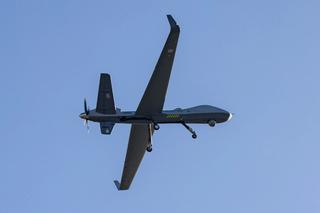Executive Summary
- The United States' National Technology and Industrial Base (NTIB) is a congressionally-mandated policy framework intended to foster integration and collaboration between defence companies and authorities based in the United States, Canada, Australia, the United Kingdom and New Zealand.
- The United Kingdom’s membership addition to the NTIB in 2017 was driven by a combination of commercial and defence interests, including opportunities to expand its access to, and role inside, an allied defence market, and to deepen military interoperability with US forces.
- In practice, however, the NTIB has faded from the forefront of recent UK policy thinking on these issues in favour of bilateral Anglo-American initiatives, which complement the two nations’ cooperation in NATO, and the trilateral AUKUS partnership.
- As things currently stand, the UK Government has earned the goodwill of President Trump, and there are several opportunities for the United Kingdom to pursue a more ambitious deepening of its defence and technology cooperation with the United States under this administration. These include shared priorities in advanced capabilities such as AI, hypersonics, quantum computing, semiconductors, unmanned systems and space.
- In doing so, Britain has the capacity to demonstrate to Washington the value of trusted allied cooperation to the amplification of American interests, and to serve a bridging function between Washington and the wider European security architecture.
- Further integrating the UK and US industrial and technology bases will require addressing long-standing challenges relating to industrial security protections, as well as aligning innovation ecosystems, reforming acquisition and procurement processes, and enhancing supply chain visibility.
Further integrating the UK and US industrial and technology bases will require addressing long-standing challenges relating to industrial security protections, as well as aligning innovation ecosystems, reforming acquisition and procurement processes, and enhancing supply chain visibility.
Recommendations
To advance the deepening of US-UK defence industrial collaboration, and trilateral cooperation through AUKUS, the United Kingdom should consider:
- Exploring a new joint advanced technology fund to support collaborative research between leading US and UK universities, including dedicated advanced capability PhD programmes leading to guaranteed employment, which produce greater numbers of home students.
- Establishing collaborative place-based ‘innovation corridors’ between high-performing UK and US universities and private sector technology firms, to foster collaboration on rapid research commercialisation and streamline talent sharing.
- Pursuing greater alignment between US and UK defence acquisition processes, including efforts to harmonise requirements, acquisition cycles, procurement, and contracting systems.
- Establishing joint formal centres of excellence focussed on priority capabilities and spanning both civil and defence use, building on recent developments in hypersonics and autonomous vehicle joint testing under AUKUS Pillar II.
- Pursuing greater industrial security reforms through AUKUS, including further streamlining defence trade controls and establishing a more transparent and efficient, reciprocal vetting process for security clearances, to facilitate greater innovation cooperation.
- Exploring a National Technology and Industry Base mapping system to illuminate shared vulnerabilities and capacity excesses in vital categories like critical minerals, semiconductors and energy components, overseen by a resilience board.
Introduction
The United Kingdom and the United States share a long history of collaboration at the forefront of commercial and military innovation, and technological development. Both nations have experimented with the nature and extent of state intervention in their technological environments and continue to prioritise innovation as an instrument of prosperity, power and social advancement. Technological innovation has always played a central role in geopolitical competition, yet the pace of development and its centrality to both economic and national security have intensified the power and significance of this frontier. While in the twentieth century, liberal democracies held structural advantages that afforded dominance over innovation pipelines, a combination of deceit and ingenuity has allowed authoritarian regimes to harness their capacities at scale to challenge Western technological supremacy. This pronounced threat to innovation dominance now requires democracies to instrumentalise their asymmetrical advantage over authoritarian states in the form of allied co-creation and co-development.

As the two most highly integrated security and intelligence partners in the democratic world, and with viable, established innovation ecosystems, the United Kingdom and the United States share many opportunities to deepen their integration. This includes the United Kingdom’s place inside the US National Technology and Industrial Base (NTIB) since 2017, alongside Australia and long-term member Canada. However, while some progress has been made through this mechanism to advance defence integration objectives, the NTIB has faded as a primary means for advancing innovation and industrial cooperation with the United States in favour of more targeted bilateral cooperation and collaboration through the AUKUS framework. While there are four partners in the NTIB, the current political and geopolitical environment supports the United Kingdom and the United States entrenching a strong bilateral core, which can also facilitate deeper and more flexible cooperation with Canada and Australia as vital partners when it makes sense to do so, rather than as a standing rule.
This paper explores the key areas of opportunity to strengthen a shared technological innovation ecosystem between the United Kingdom and the United States, and the core instruments of harmonisation that will need to be harnessed to achieve this ambition.
This paper explores the key areas of opportunity to strengthen a shared technological innovation ecosystem between the United Kingdom and the United States, and the core instruments of harmonisation that will need to be harnessed to achieve this ambition. It shows that while many of these areas are adjacent to the purposes and requirements of the NTIB, they are not necessarily being pursued with that mechanism at front of mind.
A new era of bilateral cooperation
While the trilateral AUKUS pact builds on, and is enabled by, the preparatory work of the NTIB to construct a viable defence innovation enabling environment between the United Kingdom and the United States (and other partners), it could be argued that the re-election of President Donald Trump has focused British efforts on the bilateral domain, rather than multi-state integration initiatives. In particular, the United Kingdom has specifically chosen to broadly align itself with the regulatory instincts of the United States towards the crucial frontier of artificial intelligence, at the expense of alignment with the European Union, which has thus far proven to be more effective at fostering a dynamic regulatory environment than a dynamic innovation environment.1 Beyond artificial intelligence, the United Kingdom is pursuing advanced defence systems like a Digital Targeting Web, which align with US priorities, while the UK Prime Minister Keir Starmer’s February 2025 visit to Palantir’s offices in Washington, D.C. highlighted the intent to centre technology at the heart of the bilateral partnership.2
Yet it is also the case that UK technology ambitions extend beyond cooperation with the United States, bilaterally or multilaterally. It has been the policy of the UK Government under successive leaders since Brexit to emphasise technology, research and innovation, and science at the heart of the nation’s economic strategy.3 This affords skin in the game in both commercial and military capability, and links the United Kingdom’s defence and growth missions. The United Kingdom’s Defence Strategic Review, published in June 2025, emphasises the government’s ambition to extend its innovation prowess to its leadership in NATO, which is a vital forum for the United Kingdom’s capacity to bridge between its two core alliances in the United States and Europe.4 Leadership in NATO affords the United Kingdom the opportunity to support the European Union’s alignment with NATO objectives, but also the United States’ continued integration with NATO and the defence industrial base it will seek to drive.
The United Kingdom has identified the United States as its core partner in this technological advancement mission, and Washington appears to recognise London as the leading partner to support its own objectives.
It is self-evident that the re-election of Donald Trump has created pressures for the United Kingdom’s most important relationships, especially in light of the increasing demands of the European security environment. There is an understandable concern that the ambition from both Brussels and Washington to pursue self-sufficiency could create a division in the allied industrial base, which would create tensions and trade-offs for the United Kingdom as it deepens its partnerships with both parties.5 Nonetheless, the United Kingdom’s choice to continue to affirm the inviolability of its relationship with the United States was never in doubt. Indeed, the current environment also presents unusual opportunities for London to assume a bridging function between Washington and Europe, which, with some irony, reflects a degree of its former role as the gateway to Brussels.
It is impossible to predict how the coming years will transpire in such a geopolitically febrile climate. What is certain, however, is that all developed nations will pursue dogged investment in their defence industrial bases, and that technology innovation will be at the heart of the strategic competition driving this profound recalibration of the structure and role of the state. The United Kingdom has identified the United States as its core partner in this technological advancement mission, and Washington appears to recognise London as the leading partner to support its own objectives.6 This creates a new era of opportunity to pursue the integration of the UK-US industrial and technology base, and build collective resilience and strength to compete in an era of rising authoritarian innovation.
UK participation in the US National Technology and Industrial Base
The National Technology and Industrial Base (NTIB) – expanded to include the UK in 2017 – is the US framework for integrating allied defence and high-tech industries with Australia, Canada, New Zealand and the United Kingdom. In US law, it covers “the persons and organizations that are engaged in research, development, production, integration, services, or information technology activities” in national security and dual-use fields.7 NTIB membership originally included only the United States and Canada; however, in late 2016, Congress amended the legislation to include the United Kingdom and Australia in the NTIB. The United Kingdom’s inclusion was justified by “the high degree of defence cooperation” it already had with the United States and other Five Eyes allies, and the expansion directed the US Department of Defense (DoD) to work “to reduce barriers to defence industrial integration” among the four NTIB countries.8
The United Kingdom’s motivations to integrate with the NTIB were grounded in both military and economic aspirations. The United Kingdom and the United States are already deeply intertwined as security and strategic partners, but the United Kingdom’s involvement in the NTIB would enable it to be more involved in co-creation and co-financing for cutting-edge innovation and technological advancement, with both commercial and military applications. There were also opportunities for UK firms to gain preferential footing in allied procurement, as well as possible dividends for the strength of the United Kingdom’s supply chain resilience and economies of scale.9 The DoD and the UK Ministry of Defence soon established joint planning groups and information‐sharing channels to implement NTIB integration on a bilateral level.

For defence capabilities, NTIB integration covers the co-development and procurement of weapons and systems; in the commercial realm it means easier joint research and development (R&D) and market access for firms; and in dual-use fields, such as cyber, space, AI and biotech, it fosters the shared development of technology that serves both civilian and military needs. Overall, the UK Government anticipated that through NTIB integration, British industry would gain a larger combined market and a more substantive R&D partnership, with UK armed forces benefitting from more interoperable and readily available equipment.10 While the United Kingdom’s admission into NTIB also opened the door to closer cooperation with Australia and Canada, this prospect was regarded at the time as a welcome dividend of the central focus on the UK-US integration agenda, which dominated the strategic impetus given the relative scale and value of the respective defence and technology markets.11
The UK Government has reported some concrete gains under the NTIB framework, particularly in terms of helping to resolve supply‐chain bottlenecks and align investment rules. In its 2019 UK Defence Industrial Strategy, the UK Government stated that the United States agreed to exempt the United Kingdom from certain foreign-investment reviews, and that UK companies operating under US Special Security Agreements were now waived from lengthy National Interest Determination reviews for proscribed data.12 More broadly, NTIB working groups fostered joint roadmaps and information-sharing on export controls and standards, and the United Kingdom’s membership in the NTIB and the institutional culture of cooperation it inspired undoubtedly facilitated the preconditions to enable the trilateral AUKUS partnership to develop.
Pursuing this agenda with the appropriate level of vigour will require considerable diplomatic investments from the United Kingdom and Australia, which may be difficult to service given the breadth of priority issues that will need to be negotiated under President Trump’s leadership.
There have, however, been some persistent challenges to the NTIB integration mission. The most notable of these are the United States’ domestic procurement and export policies. These often conflict with the practical implementation of the NTIB harmonisation through carve-outs and reserved contracts for US firms, and the requirement for individual license applications or congressional waivers to navigate export controls.13 These issues remain clearly present in the AUKUS trilateral partnership, despite the considerable achievements that have been made in terms of legislative and regulatory reform.14 They will undoubtedly require ongoing agitation through congressional advocacy to prevent backsliding, let alone to ensure they can be resolved. Pursuing this agenda with the appropriate level of vigour will require considerable diplomatic investments from the United Kingdom and Australia, which may be difficult to service given the breadth of priority issues that will need to be negotiated under President Trump’s leadership.
It is important for the purposes of this paper to state that it is unlikely that the work to pursue closer bilateral defence and technology industrial integration during the Trump presidency will be advanced under the specific guise of the NTIB framework per se, but rather through the patchwork of means of cooperation occurring around it. Even if many of its nascent goals remain the same, the terminology of the NTIB has becomes less central to UK Government planning, in both internal settings and external documents, and it has been largely superseded by the AUKUS partnership — which operationalises the NTIB — and the pursuit of bilateral UK-US technology cooperation as part of the two nations’ ongoing trade negotiations. The opportunities discussed within this paper are therefore seeking to advance the spirit and intention of the United Kingdom’s integration into the NTIB, while recognising that this will be practically achieved through more focused and flexible bilateral initiatives, which centre outcomes more than processes.
Instruments of harmonisation: The foundations of the enabling environment
There are a multitude of instruments required to support the effective integration of the UK and US industrial and technology bases, which build on existing progress and tackle the intractable obstacles that have plagued efforts to pursue harmonisation to date. These remedies are legislative, regulatory, institutional, cultural and practical, and will require significant political leadership to support their outcomes.
Industrial security regulations
The first area of focus to support the foundations of a joint innovation ecosystem must be the US International Traffic in Arms Regulations (ITAR); specifically, to build on and take further the achievements of the recent ITAR reforms enacted to support the AUKUS trilateral process.15 Despite the considerable gains made in these reforms, a sizeable percentage of defence-related trade pertaining to sensitive technologies remains subject to ITAR,16 which necessitates industry seeking a licence or agreement to facilitate any form of sharing or transfer. The impact of these continued restrictions is both practical and symbolic, causing delays to the innovation process and having a depressive effect on instincts towards collaboration in both the private and public sectors.
Institutional conservatism around ITAR reforms in the Pentagon means US government officials will always be motivated to seek to edge back towards a default principle of caution rather than openness, and there is a risk that even the AUKUS achievements could be incrementally eroded without ongoing efforts to maintain and secure them. A mission to expand ITAR exemptions for the United Kingdom and embed its status as a trusted partner as the basis of a new era of technological cooperation would therefore be likely to deliver trilateral, as well as bilateral, benefits.
In addition to ITAR reforms, the AUKUS experience demonstrates that UK-US cooperation around sensitive, dual-use technologies will only be made possible through the establishment of a more transparent, reciprocal vetting process for security clearances. Without the harmonisation of clearances and classifications, the capacity for personnel to practically work on both public and private sector joint initiatives is extremely limited. For example, many defence firms have created trilateral business operations to support their engagement with AUKUS, but often cannot permit sensitive conversations between different business pillars and markets due to asymmetrical classifications of information. Considerable delays also plague the approval of security clearances, preventing key personnel from supporting governments’ stated priorities and impeding the timely delivery of key capabilities. The failure to act on these two areas has caused profound delays and barriers to productivity in the AUKUS innovation pipeline, and dimmed the positive impact of other legislative and regulatory improvements.
Aligning innovation ecosystems
Further to regulatory and institutional change, structural reforms relating to innovation will be needed to foster greater integration through the NTIB.
The United Kingdom and the United States will need to align and integrate their innovation ecosystems at the earliest stages of the lifecycle process. Advanced research and development between the two nations is often characterised by duplicative efforts. An effective strategic consolidation between the partners would free up vital capacity to focus on areas of competitive advantage.
Given their considerable strengths in world-leading universities, the higher education sector should be the first pillar of the UK-US technology ecosystem. While it is understandable that governments take an interest in the priorities of the recipients of taxpayer funds, it is clear that the current US administration is taking a more confrontational approach to the independence of the US higher education sector, which could bear practical consequences for the sustainability of even the most highly valued research. Efforts should be made to ensure that these contests around funding structures do not diminish US universities’ considerable strengths as an engine of innovation, and their potential to act as a nexus towards US allies’ high-performing academic communities.

Collaborative place-based research and development partnerships, known as ‘innovation corridors’, should be established between the United Kingdom’s highest performing technology universities and leading American institutions and centres of private sector innovation, much like those that currently exist in the UK but include only domestic industries and research entities.17 This will support cooperation around the seeding of start-ups, soft-landing programmes, access to venture capital and dual-use investors, as well as facilitating productive talent exchange and mobility. Enhancing the porosity of the innovation sector as a whole and supporting fluidity between the UK and US markets will significantly improve the collective output and competitiveness of both nations’ technology offer.
In times of geopolitical stress and rivalry, Western governments have typically directed their research sectors to focus on high-value and urgent innovation requirements.18 These efforts have largely remained nationally driven; however, the rise of a revisionist China, a more formidable economic and military competitor than the West has hitherto faced, necessitates a more collaborative approach. AUKUS Pillar II in particular will require Australia, the United Kingdom and the United States to identify a limited set of priority capabilities for defence innovation, with a focus on rapid commercialisation to market. A more integrated trilateral approach would involve establishing more speculative innovation pipelines around a set of domains or objectives, focusing on technologies with both military and civilian applications.
AUKUS Pillar II in particular will require Australia, the United Kingdom and the United States to identify a limited set of priority capabilities for defence innovation, with a focus on rapid commercialisation to market.
These could set the basis of a new joint advanced technology fund, supporting collaborative research between leading US and UK universities. These initiatives could include dedicated advanced capability PhD programmes, which offer both coursework and industry placements, leading to guaranteed employment and a secure workforce pipeline for innovators. The United Kingdom has a long history of such programmes, particularly from the late Cold War period, as the UK Government sought to rebalance from the direct sponsorship of research to a more market-oriented approach. More recently, there has been a tendency for the private sector to dominate R&D at the expense of state endeavours, and there is an obvious need to again redress the disparities in patronage between the market and the state.19 One dividend of extending such cooperation to a bilateral mission would be to establish joint standards for the research environments facilitating sensitive research with national security implications, including common practices for securing labs, researcher vetting, academia export controls, and wider due diligence and oversight processes.
Acquisition and procurement
The next major area of the enabling environment that needs to be in place to support a bilateral integration of NTIB is the development of a common approach to government procurement. First, both requirements and acquisition cycles for major defence innovation platforms are currently misaligned between the United Kingdom and the United States. Second, the procurement and contracting systems remain fundamentally distinct, each with its own challenges and reflective of long-standing relationships between the governments and industry. For example, the UK and US systems diverge considerably in terms of their level of centralisation, the speed at which contracts are processed, their interactions with unique domestic priorities, and their oversight structures, with the US system generally more decentralised and nimble.20 Without alignment on these areas, or the option to develop new systems to support certain types of collaborative innovation, it will be difficult to support fully bilateral innovation challenge processes.
One of the most productive means of achieving this alignment would be through the establishment of joint formal centres of excellence, focusing on priority capabilities. These could be ‘twin labs’, spanning both civil and defence use, where the sensitive areas can be protected while enabling commercial innovation to also flourish. While there have been some important recent developments in hypersonics and autonomous vehicle joint testing under the aegis of AUKUS Pillar II,21 there is significant potential for UK and US facilities to be harnessed for greater use on a wider scope of collaboration. These could include simulation exercises and cyber ranges, which are important for multi-domain concepts, as well as sharing supercomputer resources for common innovation pursuits.22 Given the importance of private financing in supporting such innovation, the creation of dedicated bilateral public-private programmes, including co-funded ‘moon-shot’ projects, could leverage both nations’ considerable resources in venture capital and their investment communities.
Supply chain visibility
Despite the close strategic cooperation between the United Kingdom and the United States, gaps remain in their respective visibility of one another’s supply chains and dependencies, which makes it more challenging to think collaboratively about resilience planning.23 A National Technology and Industry Base mapping system would help to illuminate the areas of greatest respective need and support, leveraging individual allied relationships and resources to support one another’s resilience — particularly in vital areas such as critical minerals, semiconductors and energy components. Such a system could be overseen by a resilience board to help ensure that any major supply chain disruptions from global events can be addressed with collective might and joint amplification.
Opportunities to enhance joint initiatives
There is no shortage of existing examples of productive UK-US collaboration around defence and commercial technologies,24 which could be deepened and expanded as part of a focused effort to promote a more cohesive NTIB. There are, however, serious questions to be asked about the resilience of certain expressions of this cooperation in the current political environment, which presents challenges because of the need for advanced technical innovation to be underpinned by consistent structures. The 2023 Atlantic Declaration Action Plan set out a framework for joint UK-US leadership in semiconductors, quantum, AI, telecommunications systems and synthetic biology.25 Under this plan, the United Kingdom and the United States launched new working groups and structured dialogues.26 It is unclear which of the existing initiatives are likely to be retained under the new US leadership, and the degree to which they can be adapted without a fundamental disruption to activities.
This is partly a consideration due to the shifts in the cultural purview in Washington, which underpins decisions around the nation’s industrial and regulatory policy. For example, a considerable degree of work around AI ethics and data privacy has been advanced in the bilateral relationship over recent years,27 but may not continue to capture the same level of significance under the Trump administration, which favours a less interventionist approach. Similarly, work on green technology may also not be prioritised as an area for cooperation, given that President Trump has sought to distance himself from many Biden-era initiatives in this area. This may mean that the Memorandum of Understandings signed between the United Kingdom and the United States — including one in 2024 creating linked AI Safety Institutes for joint testing of advanced models, and one in 2023 supporting the Joint Clean Energy Supply Chain Action Plan — may be supplanted with other near-term priorities.28 It was announced in June 2025, for example, that the US Government was rebranding its AI Safety Institute into the ‘Pro-Innovation, Pro-Science U.S. Center for AI Standards and Innovation’, which reinforces the nature of the recalibration that is to be expected.29 Recognising this shift in emphasis in Washington, the UK Government has now rebranded its own AI Safety Institute into the ‘AI Security Institute’.30

Despite the shifting political winds, there is a significant degree of UK and US alignment in the fundamental capabilities themselves, which affords reason to be optimistic about the possibilities of bilateral cooperation. Short-term bilateral defence priorities between the two nations are likely to focus on hypersonics, electronic warfare, cyber-security, AI-enabled autonomy, under-sea warfare and enhanced space capabilities — many of which are captured within the AUKUS partnership. Over the mid-term, the emphasis on capabilities will shift in focus from simply the projection of deterrence to the conflict readiness that must underpin its effective demonstration. Both nations are exploring new future combat air systems, autonomous capabilities, directed-energy weapons and advanced quantum capabilities.
For dual-use and commercial technologies, it is AI that will dominate much of the innovation focus, as both nations simultaneously grapple with the profound implications of this technology for governance, civilian life, economic structures, and the ever-expanding arena of military threats. At a technology industry event in London in June 2025, the CEO of American tech giant NVIDIA, Jensen Huang, told Prime Minister Keir Starmer that the United Kingdom’s AI capabilities were the envy of the world, urging greater domestic investment in supportive infrastructure to unleash the sector’s full potential.31
Another area of significant existing dual-use cooperation with room for further expansion is in the field of space technologies, which carry both commercial and military applications.
Another area of significant existing dual-use cooperation with room for further expansion is in the field of space technologies, which carry both commercial and military applications. The UK Government took a decision after Brexit to pursue a sovereign space capability beyond its commitments to the European Space Agency, which has coincided with considerable success in the proliferation of commercial space companies.32 This dynamism earns the United Kingdom the capacity to enhance America’s strategic space capability, as well as supporting efforts to establish new frameworks of global governance around both private and military space domains. The war in Ukraine has demonstrated how vital both commercial and military space capabilities are to enabling effective defence and national resilience,33 and also the dominance of the United States — both in its state capacity and private sector — in many of these fields in the European theatre. However, as China seeks to contest this dominance in other regions and in global leadership, the United States would benefit from harnessing the innovation capability of its closest ally.
The evident imbalance between the two nations’ funding capacities and capability dominance must be confronted. However, it is also the case that as a smaller but sophisticated partner, the United Kingdom has something to offer to support the United States’ competitiveness towards China. Technologies such as semiconductors have high capital costs and even the United States has struggled to secure complete sovereign control over the end-to-end supply chain. The United Kingdom has discrete but valuable capabilities in niche areas of the value chain, and the potential to conduct considerably higher levels of research with support for commercialisation pipelines.
Dual-use technologies are often subject to export control complexities, due to their mixed jurisdiction between government departments, and the challenges in definitively determining safeguards around their distinctly military applications. The development of common standards on these principles will be essential to the advancement of dual-use technology cooperation and will require a degree of consensus around not only the economic opportunities but the geopolitical competition at the heart of the United States’ overt interest in these fields. It appears that the United States will increasingly adopt a low risk tolerance in its assessment of Chinese dual-use technologies, but the ambiguities around the assessment of these in the allied domain have significant consequences for information-sharing and practical collaboration.
Conclusion
The United Kingdom and the United States share a considerable degree of alignment in many areas of both commercial and military innovation priorities. While the United States is pursuing a strategic recalibration of its international role — with a greater emphasis on self-sufficiency — the formidable competition presented by China towards its technological dominance necessitates the harnessing of all available instruments. Of all its allies, the United Kingdom shares with the United States the highest level of structural integration in the security domain, the greatest degree of cultural compatibility regarding innovation environments, and the most exceptional sovereign capabilities in its state and private sector-led innovation ecosystem for America’s priority interests.
The United States must be persuaded of the value of allied cooperation in these domains and the need for greater integration to underpin efficiencies of production and economies of scale.
There is a considerable opportunity, through the practical integration of the UK and the US technology industrial bases, to create a more seamless and mutually reinforcing bilateral innovation landscape, which draws on the strongest attributes of both nations. There is a strong emphasis under the current US leadership on agility, flexibility and sovereignty, which is recognised and accommodated by the UK Government. It is unlikely that the NTIB as a specific concept will be significantly advanced as an allied endeavour under such circumstances. However, the by-products of the early integration achievements at the start of the decade, the AUKUS partnership and its regulatory reforms, and the new momentum towards UK-US bilateral technology partnerships, will all support the continued development of the NTIB objectives in more ad hoc and complementary forms.
The United States must be persuaded of the value of allied cooperation in these domains and the need for greater integration to underpin efficiencies of production and economies of scale. In turn, the UK Government must anticipate that Washington will demand greater scrutiny of China’s presence in the nation’s university and research sectors. The clarity provided in the United Kingdom’s 2025 Strategic Defence Review, in its overt articulation of China’s technological dominance and the threat this poses to the United Kingdom’s direct interests, is an important foundational step towards deeper cooperation. Both the United Kingdom and the United States must recognise what is at stake if an authoritarian state seizes control of technological development, infrastructure and standards-setting, and that it will only be possible to prevent this through productively leveraging the full potential of their closest alliances.
This report was supported by the Australian Government through a Strategic Policy Grant from the Australian Department of Defence (SPGP 202021-0837 — US-Australia Defence Industry Cooperation-Operationalising, Empowering and Modernising the Alliance. The views expressed herein are those of the author and are not necessarily those of the United States Studies Centre, the Australian Government or the Australian Department of Defence.






